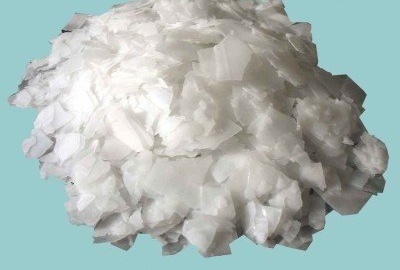Disinfection of water in a well: how to get rid of bad smell and dirt in the water?

The key well water, praised in music and literature, in practice does not always turn out to be crystal clear. For various reasons, contaminants penetrate into the reservoir, the presence of which gives off an unpleasant odor, a changed color, etc. In this case, the disinfection of the well is necessary.
Why can the water in the well deteriorate?
There are many enemies near clean well water. This spring flood, which can flood the well, bringing in it various pollution, and sewage leaked into the ground, and various chemicals used in agriculture, and even the corpses of animals that accidentally got inside. Disinfect the water during the scheduled cleaning of the structure.
Water affects the quality of time. Gradually, various small debris, dust, dirt, etc. get inside. The bottom and walls of the structure are silted up, as a result, the water quality becomes unsatisfactory.
To maintain the well in good condition, you must:
- periodically do well water analysis;
- regularly clean the walls and bottom;
- carry out disinfection;
- take care of high-quality installation and timely repair of house sewers;
- always cover the well with a lid.
Cleaning Procedure Recommendations
It should be remembered that disinfection of water in a well is part of the procedure for cleaning it. Regularly, about once a year (or several years), water is pumped out of the structure, then its walls and bottom are cleaned of dirt and silt, disinfected, etc. Here is one of the effective schemes for cleaning a well:
- Use a pump to pump water out of the well.
- Check the condition of the waterproofing at the joints of the rings and the pipe inlet.
- If necessary, restore damaged waterproofing.
- Remove dirt, sludge and other deposits on the walls of the well and from its bottom.
- Dry well rings. If necessary, you can use forced drying: clean the bottom filter, lay an additional layer of schungite on the bottom and disinfect the bottom and walls of the well.
- Sanitize well water.
Some homeowners have successfully used pond aerators in water treatment. This improves the quality of disinfection and inhibits the growth of sulfur bacteria.
How to carry out disinfection work?
Most often, chlorine is used for disinfection in a well. Of course, not pure, but its compounds, which are relatively safe. First, the walls of the well are wiped with a solution. To prepare it, you need to dissolve about 20 grams of bleach per liter of water.
Instead of bleach, you can use chlorine-containing household chemicals, for example, the tool "White". To prepare a disinfectant solution, it is enough to take 500 mg of such a tool in a bucket of water.
The solution is applied to the walls of the well in any suitable way:
- using a spray gun;
- with a brush;
- roller;
- a cloth wound on a stick, etc.
The main thing is that the walls of the well are covered with a uniform layer of a solution containing chlorine. Since chlorine-containing compounds have a characteristic pungent odor, a respirator or at least a gauze dressing should be used during operation to protect the airways. The solution must be prepared exclusively in cold water, since chlorine will evaporate under the influence of heat and the disinfecting effect will be lost.
After the well is filled with water, it must also be cleaned. To do this, you can prepare a solution of cold water with bleach: you need to take 200 g of lime per liter of well water. The solution is mixed in a container, which then needs to be tightly closed with a lid. Now you need to wait until the lime is extinguished and the solution settles a little. The upper layer of clear water is drained, the rest is mixed and poured into the well.
There is an alternative recipe for disinfection of well water. You just need to pour 1 liter of the Belizna chlorine-containing product into the well for each ring of water.
Now the water in the well needs to be mixed in one of the ways:
- using a long stick;
- selecting and pouring several buckets of water back into the well;
- raising a filled bucket above the surface of the water and letting it go down;
- arranging an annular pumping of water (lower the pump and the end of the hose connected to it into the well).
Now you need to close the hole with polyethylene or a dense cloth for about a day (sometimes 12 hours is enough). The next day, the disinfection procedure is completely repeated, that is, a new solution is poured into water, mixed, covered, etc. Of course, you should not use water from the well at this time.
The final stage of disinfection begins with pumping water from the well. Most likely, you will have to repeat the operation several times until the smell of chlorine disappears or at least weakens to an acceptable level. The walls of the well must be rinsed with clean water.
After the well is filled, it can be considered ready for operation. However, over the next one to two weeks, it is still recommended to boil the water before use. Another important operation is the analysis of water quality after disinfection. Be sure to make sure that cleaning the well led to the desired result and clean well water appeared at the disposal of the owners of the house.






2 comments